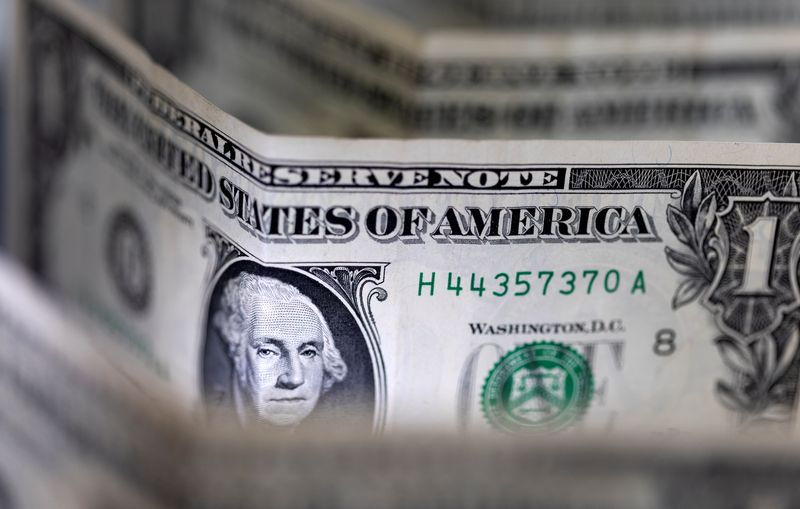By Sarupya Ganguly and Indradip Ghosh
BENGALURU (Reuters) - U.S. Treasury yields will fall in coming months despite clear signs the Federal Reserve is reluctant to consider rate cuts any time soon, according to bond strategists polled by Reuters who said the 10-year yield would not revisit its cycle peak.
Although yields have mostly defied predictions in recent months and come in higher on a still-resilient economy and an inflation-focused Fed, bond strategists, mostly at sell-side firms, have clung to their expectations for declines.
The median forecast for the 10-year Treasury note yield was 3.60% in six months, a slight upgrade from 3.50% in a July survey, and compared with 4.03% on Wednesday and a cycle high of 4.34% last October, the Aug. 3-9 poll of 41 strategists showed.
But some analysts are showing signs of hesitation about steep falls. The 10-year note yield is still well below the 2-year equivalent, usually a sign of impending recession at a time when most of the talk in markets is about the Fed avoiding one.
"We now see more limited scope for yields to fall over coming quarters," said Phoebe White, U.S. rates strategist at J.P. Morgan. They upgraded their year-end 10-year yield forecast to 3.85% from 3.50%.
"A stronger growth trajectory into next year than we previously forecast should allow the Fed to stay on hold for longer, and we now expect just 25bps of easing per quarter beginning in Q3 2024," she said.
But an overwhelming 81% majority of respondents to an additional question, 29 of 36, said the 10-year yield would not revisit its October 2022 high of 4.34% at any point in this cycle. The remaining seven said it would, with most expecting that to happen this year.
A hotter-than-expected July U.S. consumer price index inflation reading, due Thursday, could raise expectations for more hawkish Fed policy and drive bond yields up further. Prices rose 3.3% from a year ago last month from 3.0% in June, a separate Reuters poll predicted.
Interest rate futures are now pricing in the first Fed rate cut in May 2024 instead of March a few weeks back.
"The market is currently pricing six rate cuts next year. I don't see that, because I don't think inflation will go back down to 2%, preventing the Fed from cutting too aggressively," said Zhiwei Ren, portfolio manager at Penn Mutual Asset Management.
"For inflation to go down from 8% to 3% was fairly easy, but going down to 2% will be very hard given the very strong labor market," he added.
According to the poll, the interest rate-sensitive 2-year note yield will have dropped over 40 basis points to 4.33% six months from now.
If realized, this would reduce the yield curve inversion - the spread between yields of 2-year and 10-year notes - to about 30bps in a year from about 75bps currently.
That view was in line with bond traders betting on yield curves returning to a more normal shape on hopes slowing economies force central banks to cut interest rates.

"As we move forward and the Fed goes from a singular focus on fighting inflation to being on hold, we are likely to get a steeper yield curve configuration," said Robert Tipp, chief investment strategist at PGIM Fixed Income.
"If our forecasts are correct, we will in fact achieve a soft landing ... and this would be an exception to the rule for curve inversion."